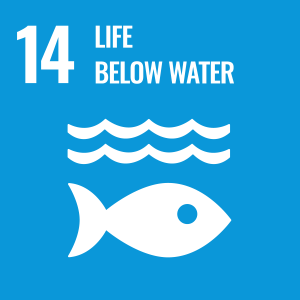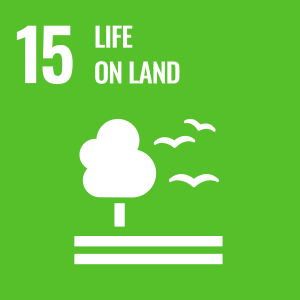Learning Objectives
- Identify the requirements for biological evolution to occur
- Distinguish biological evolution of populations from changes to individual organisms within their lifetimes
- Cite evidence for evolution
- Distinguish between homologous and analogous structures
- Recognize common misconceptions about evolution
Life on Earth
Recall from the What is Life? reading earlier in this course that evolution is an emergent property of life. Here we delve deeper into what biological evolution is and does. Previously we defined biological evolution as change in the heritable characteristics of a population over succeeding generations. In more technical terms, biological evolution is defined as change in the gene pool of a population, measurable as changes in allele frequencies in a population over time.
In the earlier reading, we touched on evolution by natural selection and evolution by mutation. Because the definition of evolution is change in the heritable characteristics of a population over generations, evolution can occur by means other than natural selection. Evolution can also occur via random processes, especially in small populations, where the frequency of some heritable traits may rise or fall just by chance. We will discuss these mechanisms of evolution in a future reading.
The video below defines and gives examples of biological evolution, and ends with a teaser about the role of natural selection in biological evolution.
Evolution is a theory, not merely a hypothesis

Darwin published his theory of evolution in On the Origin of Species (1859), with carefully reasoned evidence to support this theory that all life on earth evolved from a common ancestor. This theory has been tested in numerous ways by the work of many thousands of scientists. Every test has produced results that are consistent with the theory. Evolutionary biologists conduct research to elaborate or refine the theory and understand the mechanisms at work in specific populations. Evolutionary theory now forms a framework for biological thinking, so that one famous evolutionary biologist wrote that “Nothing in Biology Makes Sense Except in the Light of Evolution” (Dobzhansky, 1973).
The scientific use of the word theory is very different from the casual, every-day use. A scientific theory is an overarching, unifying explanation of phenomena that is well supported by multiple, independent lines of evidence—i.e., composed of hundreds or thousands of independent, well-supported hypotheses.
A few key lines of supporting evidence:
- geological and fossil record, showing that the Earth is about 4.5 billion years old, and sequential changes in the kinds and forms of living organisms over geological time scales
- homologies in body plans, structures, and DNA sequences indicative of common ancestry
- a common biochemistry for all life on Earth – the same amino acids that share the same chirality, the same biological building blocks, the same genetic code
- inference of evolutionary relationships from gene sequence comparisons largely agree with the fossil record and are consistent with a common origin for all extant life on Earth.
The video below highlights some of this key supporting evidence in the context of the evolution of whales:
Homologous or Analogous?
In comparing characteristics of organisms, we have to keep in mind that organisms may have similar characteristics either because they inherited the characteristic from a common ancestor or because they both independently evolved similar characteristics. For example, the tail fins of dolphins, orcas, and whales are similar in shape, and they were inherited from a common ancestor of these marine mammals. Their tail fins are homologous, meaning their similarity is due to inheritance from a common ancestor. On the other hand, the tail fins of orcas and sharks are not homologous, because the common ancestor of all mammals did not have tail fins. They are analogous structures that evolved independently in sharks and marine mammals. When scientists analyze evolutionary relationships between groups of organisms, they have to be careful to distinguish whether observed similarities between the groups are homologous or analogous.
Common misconceptions about evolution
Here are corrections to some common misconceptions about evolution by natural selection:
- Misconception: Individuals evolve. Correction: The individual undergoing natural selection does not evolve–it just lives or dies! Instead, the population of organisms evolves. Recall that evolution is the change in allele frequencies, and only populations have allele frequencies. Individuals just have alleles.
- Misconception: Evolution is directed or has an end goal. Correction: Evolution is not a directed process with a fixed end point or a best phenotype. Rather, the environment serves as a selective agent. No amount of scheming or planning on the part of the organism can predict whether that organism will be a good fit for the environment it finds itself in. An individual cannot “try” to evolve or “anticipate” the types of mutations it should have for future environmental change.
- Misconception: Organisms act for the good of the species. Correction: Organisms, and the genes they contain, do not behave for the ‘good of the species.’ Rather, each individual lives and reproduces, which increases its representation in the gene pool, or it dies or fails to reproduce and is not represented in the gene pool. Those most represented after encountering a selective agent are considered the “most fit” for that environment, in that time and place.
- Misconception: Natural selection optimizes traits. Correction: Selection doesn’t always result in the best possible fit of an organism to its environment because of constraints and trade-offs. Sometimes the same genes that code for a trait also cause a second, suboptimal trait to occur.
- Misconception: A changing environment cause mutations to occur, creating necessary variation to respond to environmental change. Correction: Mutations are not caused or induced as a result of environmental change. Variation is already present in the population. When the environment changes, those individuals that already have some beneficial variation (mutations) that is well suited to the new environment are more likely to survive and reproduce; organisms do not develop new mutations in response to the environmental change. (And if there is no variation present in the population such that some individuals survive and reproduce, then the population is likely to go extinct).
We will explore the mechanisms that contribute to evolution over the next class sessions.
For thought and discussion:
Think of some ways that evolution can be or has been tested. What testable predictions arise from evolutionary theory?
How does the work of many geologists or some physicists test evolutionary theory?
What are some other common misconceptions about evolution?
UN Sustainable Development Goals


SDGs 14 Life Below Water and 15 Life on Land –
Everything evolves! Understanding the common features of life on Earth is crucial for the conservation and protection of Earth’s biodiversity, and potentially for understanding life we may one day find elsewhere!
Evolution Resources:
Evolution 101 University of California Berkeley evolution site, a complete resource for learning and teaching about evolution. Engaging, well-illustrated, accurate.
How did feathers evolve? Carl Zimmer’s TED-Ed video, 3 1/2 minutes.
Evolution animation by Tyler Rhodes, produced from drawings made by children copying a drawing of a salamander-like animal with successive generations of variation, mass extinction and selection. The process is described in this Scientific American blog post http://blogs.scientificamerican.com/psi-vid/2012/02/29/an-evolution-animation-unlike-any-youve-seen-before/ and Tyler Rhodes blog http://evolutionanimation.wordpress.com/ describes both the drawing “game” and his animation process. His “wheel of life” is an amazing phylogenetic tree of the drawings.
Newly found: the world’s oldest fossils A post in the Why Evolution Is True blog by Jerry Coyne, explaining the paper by Wacey, D.,M. R. Kilburn, M. Saudners, J. Cliff, and M. D. Wacey et al. 2011. Microfossils of sulphur-metabolizing cells in 3.4-billion-year-old rocks of Western Australia. Nature Geoscience online: doi:10.1038/ngeo1238
Darryl Cunningham Investigates: Evolution A lucid, inviting comic-strip presentation of basic evolutionary theory and evidence. Aimed at beginning learners.
Nothing in Biology Makes Sense Except in the Light of Evolution Dobzhansky’s 1973 essay in The American Biology Teacher 35:125-129, just as relevant today as then.


One Response to What is evolution?